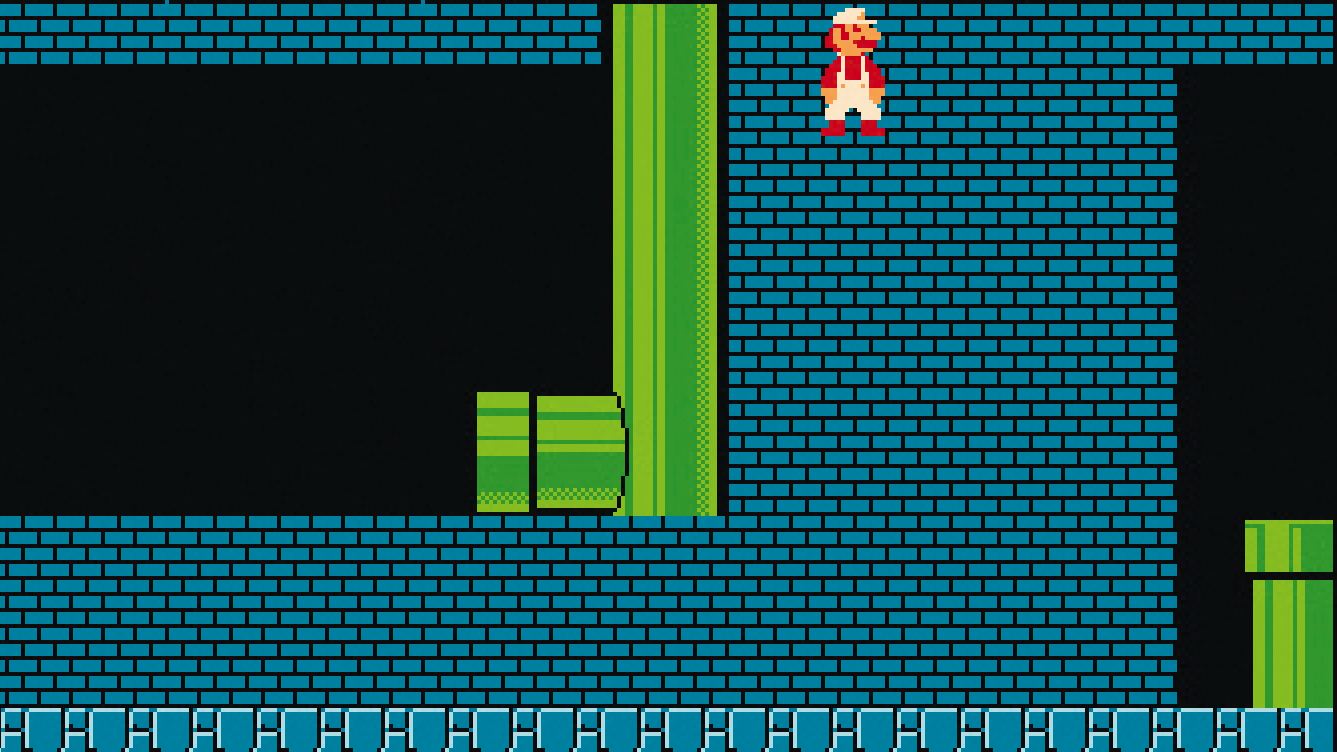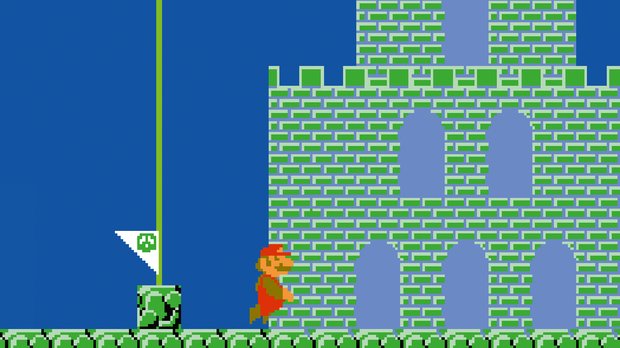How Super Mario Bros' famous glitch captured our imaginations
Science has mostly usurped the supernatural in our collective consciousness, but the concept of magic is too old and too meaningful to just fade away. The inexplicable continues to slip through the chinks in reason, taking the form of ghostly presences, statistical flukes, and psychedelic experiences. But the kind of phenomena that are supernatural for us become mundane in the context of video games, obedient to different but equally constant physical laws. If an ability to throw fireballs is encoded into your reality, it isn’t really magic. Something has to leap outside of the ordinary or it’s just a parlour trick. The real magic lies in glitches. These coding flaws turned out to be centrifuges for the dreams and desires of a generation of console gamers, and never with more lasting influence than the Minus World from Super Mario Bros.
You could make a good case for the Minus World’s influence simply as a prototypical ‘water level’, but its greater impact was purely symbolic and contextual. It isn’t like Final Fantasy’s Gold Saucer or Mass Effect’s Normandy, where you can just show it to someone and say “See?” Yet the only real difference between the Minus World and World 7-2 is the ‘-1’ at the top, and 7-2 was already just 2-2 with more Bloopers. In the mid-’80s, however, when we were still internalising the new metaphysics of console games, that little number meant a lot. It was our first clear inkling that this new layer of reality we were exploring was imperfectly contrived and had its own hidden layers, that mystical realms lay beneath the rational surface. It also fuelled our unfounded convictions that other limits, a prerendered door or a far-off painted peak, might also be bypassed through some arcane manoeuvres.

The idea of the Minus World as a mystical space within an orderly cosmology is further strengthened by the way that Mario gains access to it, which accidentally taps into the magical concept that certain sequences of gestures and movements, performed in a place of power, can warp the fabric of reality. To access the pipes that lead to the Minus World, Mario has to find a certain brick wall at the end of World 1-2 that is both solid and permeable. In order to phase through the bricks, he has to leap while remaining in a crouch, a superhuman feat that recalls the physical exploits of the shamans in Carlos Castaneda’s books. When he penetrates the wall without breaking it, anomalously coexisting in the same space, it quickly squeezes him out the other side, as though reality were eager to correct itself. But it’s too late: Mario has crossed the divide into the irrational, never to return.
The Minus World captured imaginations because it was relatively easy to find, but it wasn’t the first example of a coding oversight creating a mind-bending secret space in games. Its most legendary predecessor is the kill screen in the 256th level of Pac-Man, where half the maze breaks down into a semiotic nightmare of letters and numbers, as though Pac-Man had wandered into a postmodern novel – or into the disintegrating mind of someone who has played 256 consecutive levels of Pac-Man. Like the Pac-Man kill screen, the Minus World can only be escaped by dying, leaving you trapped in a hellish time loop that enhances the taboo thrill of infiltrating the messy innards below the game world’s gleaming facade. Similarly, another Mario glitch, jumping over the flagpole, strands you alongside an infinite brick wall. The uneasy philosophical implications of such glitches seems likely to have planted the seed for contemporary digital artists such as Cory Arcangel, whose Super Mario Clouds piece eliminates all the game’s graphics except a blue sky and white clouds scrolling endlessly.

The glitch was quickly accommodated in the vocabulary of video game design and culture. It probably helped popularise the deliberately created secret world, and it gave us the most volatile and exotic of all Pokémon, the MissingNo. You’d think such things would fade away – like magic into science – as technology improves, and perhaps they will. But human imagination and ambition are among the few things that evolve faster than technology, so for now compelling glitches still flourish in sprawling games such as the 3D Fallouts, where the rotating heads and chatty viscera are far more fantastical than all the giant bugs. Still, the most important legacy of the Minus World is the folklore it fuelled: the apocryphal levels and alternate outcomes that, because they can only be dreamed, are some of the most vivid places in gaming.
The implicit promise of the glitch is that you really can get Pokémon’s Mew out from under that delivery truck, find the Triforce in Ocarina Of Time, save Aeris in Final Fantasy 7, or make Lara Croft’s clothes disappear. In-game red herrings and wishful thinking account for some of these myths, but it was the Minus World that first made us believe that anything was possible in video games, and that no area was ever truly off limits. Before the Internet, these tall tales circulated like urban legends: the person who told you about the hidden volcano level had never actually played it, but his older brother’s friend had. You didn’t quite believe them, but nearly managed to out of sheer desire for there to be a little more terrain to uncover, a little more experience to be had beyond the finite quantity spread before you, if only you could do the right secret things in the right order.
Read more from Edge here. Or take advantage of our subscription offers for print and digital editions.
Sign up to the GamesRadar+ Newsletter
Weekly digests, tales from the communities you love, and more
Edge magazine was launched in 1993 with a mission to dig deep into the inner workings of the international videogame industry, quickly building a reputation for next-level analysis, features, interviews and reviews that holds fast nearly 30 years on.



